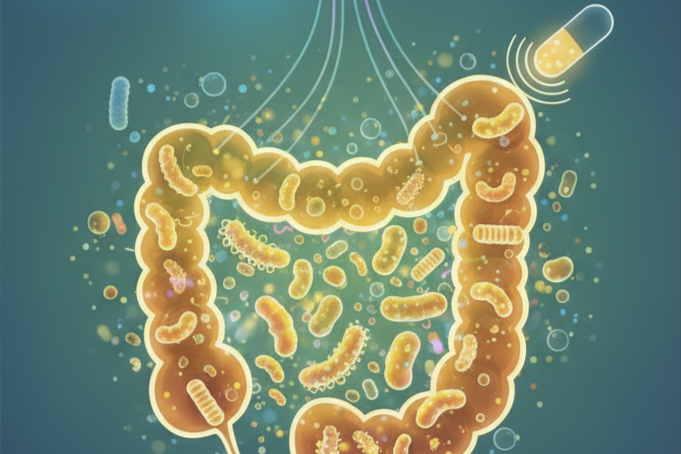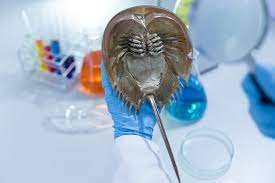Public health is a multifaceted, constantly changing field that deals with community health. Ranging from pandemics and diseases, to mental health and healthcare disparities, the field is built around supporting communities during times of crisis.¹ Characterized as a drug crisis that has swept the nation since the 1990s (through the increase accessibility of and addiction to Opioids), the Opioid Epidemic is well known throughout public health for its persistence and devastating impact on communities across the United States.
But what exactly are opioids? Classified as synthetic and semisynthetic,² opioids encompass a broad category of drugs that target pain receptors in the brain and spinal cord (the central nervous system) to dull/dampen pain perception. While highly effective, these drugs have extremely addictive properties as they directly affect the brain’s “reward center”, releasing powerful neurotransmitters like endorphins and dopamine. This causes opioid users to experience a sense of elation and euphoria, which, upon the opioids wearing off, causes a “crash” with the decrease in neurotransmitters released.³ Opioids include legal prescription drugs like hydrocodone, oxycodone, fentanyl, and codeine, and illegal drugs like heroin.⁴
The Opioid Epidemic is characterized by 4 main “waves”. The first wave started in the 1990s as a result of increased marketing by pharmaceutical companies on the effectiveness of opioids for pain management. This led to an increased prescription of and subsequent overdependence on opioids, which had devastating effects on thousands of people, families, and communities.⁵ Over the next decade, a rise in opioid addiction led to overuse, misuse, abuse, and overdose deaths. From 1999 to 2010, sales of prescription opioid drugs quadrupled while the rate of overdoses more than doubled from 2.9 to 6.8 deaths per 100,000 people.⁶
The second wave (2002-2013) was characterized by a rapidly expanding illegal drug market, which had a high demand for heroin. As production increased and price decreased, heroin began to be more widely accessible. Those already addicted to opioids were quick to transition to heroin and other highly addictive, illegal drugs. Heroin overdose deaths nearly quadrupled from 0.7 to 2.7 deaths per 100,000 people from 2002 to 2013.⁷
What makes this drug epidemic, in particular, so dangerous is how the waves connect and overlap. Since 2013, the third wave, a result of increased Fentanyl production, has exacerbated opioid effects. Fentanyl’s easy manufacturing and low production costs, in conjunction with its highly addictive, yet fatal nature, make it appealing to the illicit drug market. It is used as a cutting agent within the industry, augmenting other drugs’s quantity and potency.⁸ As a result of boosting the addictive properties of drugs cut with fentanyl, illegal market profits skyrocketed.⁹ From 2019 to 2022, there were approximately 73,000 deaths caused by fentanyl-related drug overdoses, a testament to the dangers of this drug when used in the illicit drug market.¹⁰
The most recent wave of the Opioid Epidemic, the fourth wave (2020-current), is based on the high mortality rate associated with methamphetamines and cocaine combined with opioids.¹¹ This wave is especially dominant in rural communities or those previously untouched by the epidemic, where overdoses have been increasing at an alarming rate akin to that of urban communities.¹² This is due to rural communities often having less access to healthcare because of their geographic distances from medical services, low population densities, and fewer healthcare providers (as seen by the doctor shortage throughout the US).¹³
With each wave characterized by an unprecedented number of deaths, and a rapidly increasing population affected by addiction and opioid abuse, the Opioid Epidemic is considered to be the worst drug epidemic in history and massive failure of US public health regulation. Profit-driven pharmaceutical companies pushed highly addictive drugs (opioids) without proper investigatory measures by US regulatory institutions (i.e. the US Food and Drug Administration). However, while the epidemic rages on, healthcare efforts in the US are focused on spreading awareness about the dangers of opioids and addiction management. Prevention and mitigation efforts, funded through congress legislation, have enabled the development of powerful new tools and strategies to actively save lives. For example, Congress has passed legislation providing over $1 billion dollars annually to the Substance Abuse and Mental Health Services Administration for a new State Opioid Response grant program, with additional funding for the Centers for Disease Control and Prevention and the Health Resources and Services Administration.⁶ Harm reduction programs (such as needle-exchanges) help minimize the spread of harmful, contagious diseases like HIV/AIDS.¹⁴ Additionally, public health approaches work towards making Narcan (an opioid overdose preventing nasal spray) more readily available to help save lives.¹⁵
Though the Opioid Epidemic continues to claim lives, decimating families and communities, public health initiatives have made significant strides in reducing overdose deaths, with reports indicating a 14.5% decrease in opioid-related deaths since 2023.¹⁶ As the US works towards implementing new and innovative opioid-safety measures, we may just be on the cusp of turning the tide for this drug crisis.
References
What is public health? American Public Health Association - For science. For action. For health. Accessed February 27, 2025. https://www.apha.org/what-is-public-health
Opioids. National Institutes of Health. December 3, 2024. Accessed February 27, 2025. https://nida.nih.gov/research-topics/opioids
Am I at risk of opioid addiction? Mayo Clinic. July 20, 2024. Accessed February 27, 2025. https://www.mayoclinic.org/diseases-conditions/prescription-drug-abuse/in-depth/how-opioid-addiction-occurs/art-20360372
Opioids. Johns Hopkins Medicine. May 11, 2023. Accessed February 27, 2025. https://www.hopkinsmedicine.org/health/treatment-tests-and-therapies/opioids
Writer B, By, Writer S. What led to the opioid crisis-and how to fix it. Harvard T.H. Chan School of Public Health. November 22, 2024. Accessed February 27, 2025. https://hsph.harvard.edu/news/what-led-to-the-opioid-crisis-and-how-to-fix-it/
The Opioid Crisis in the United States: A Brief History. Accessed February 27, 2025. https://crsreports.congress.gov/product/pdf/IF/IF12260
Vital signs: Demographic and substance use trends among heroin users - United States, 2002–2013. Centers for Disease Control and Prevention. Accessed February 27, 2025. https://www.cdc.gov/mmwr/preview/mmwrhtml/mm6426a3.htm
Drugs and Fentanyl Awareness | Fremont Police Department, CA. Accessed February 27, 2025. https://www.fremontpolice.gov/crime-prevention/drugs-and-fentanyl-awareness
Understanding heroin cutting agents - the recovery village Palm Beach at Baptist. The Recovery Village Palm Beach at Baptist Health. February 7, 2025. Accessed February 27, 2025. https://www.floridarehab.com/drugs/heroin/heroin-cutting-agents/
Drug overdose deaths: Facts and figures. National Institutes of Health. September 30, 2024. Accessed February 27, 2025. https://nida.nih.gov/research-topics/trends-statistics/overdose-death-rates#Fig8
Ciccarone D. The Rise of Illicit Fentanyl, Stimulants and the Fourth Wave of the Opioid Overdose Crisis. Current opinion in psychiatry. July 1, 2021. Accessed February 27, 2025. https://pmc.ncbi.nlm.nih.gov/articles/PMC8154745/#:~:text=A%20’fourth%20wave’%20of%20high,with%20the%20ongoing%20opioid%20epidemic
Coming wave of opioid overdoses “will be worse than ever been before.” News Center. August 29, 2022. Accessed February 27, 2025. https://news.feinberg.northwestern.edu/2022/08/25/coming-wave-of-opioid-overdoses-will-be-worse-than-ever-been-before/
Jenkins R, Ciccarone D, McMahan VM, et al. The fourth wave of the US opioid epidemic and its implications for the rural us: A federal perspective. Preventive Medicine. August 28, 2021. Accessed February 27, 2025. https://www.sciencedirect.com/science/article/pii/S0091743521001250
Syringe Services Programs: A Naco opioid solutions strategy brief. National Association of Counties. Accessed February 27, 2025. https://www.naco.org/resource/syringe-services-programs-naco-opioid-solutions-strategy-brief
Opioid overdose reversal medications - OORM. SAMHSA. Accessed February 27, 2025. https://www.samhsa.gov/substance-use/treatment/overdose-prevention/opioid-overdose-reversal
Overdose Deaths Decline, Fentanyl Threat Looms. DEA. Accessed February 27, 2025. https://www.dea.gov/press-releases/2024/12/16/overdose-deaths-decline-fentanyl-threat-looms






